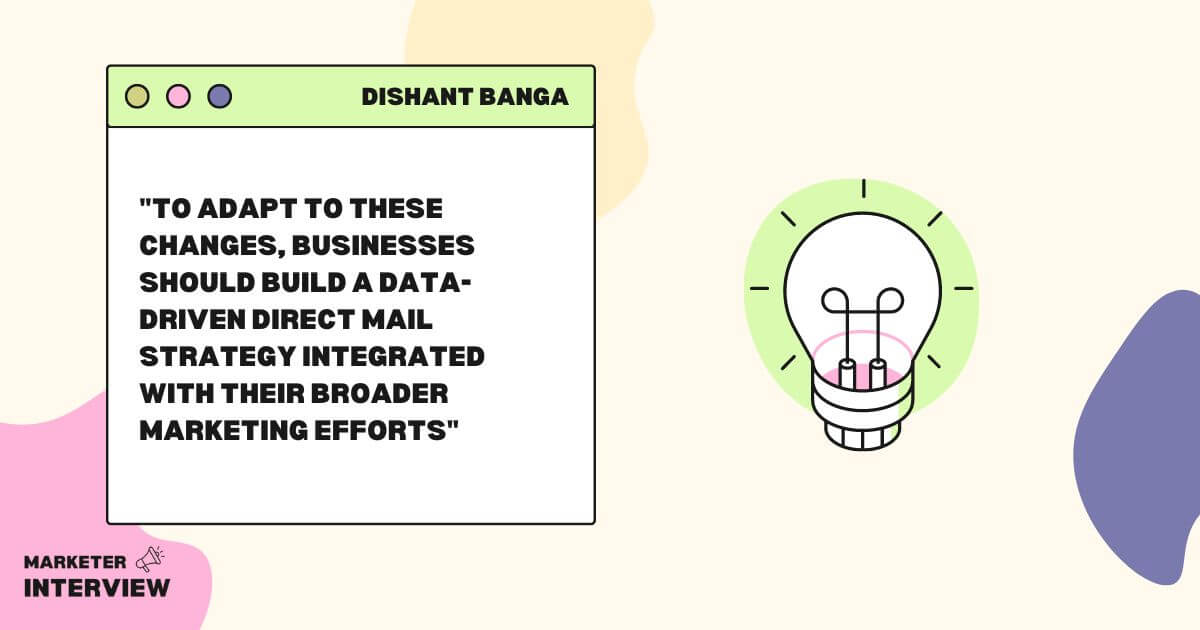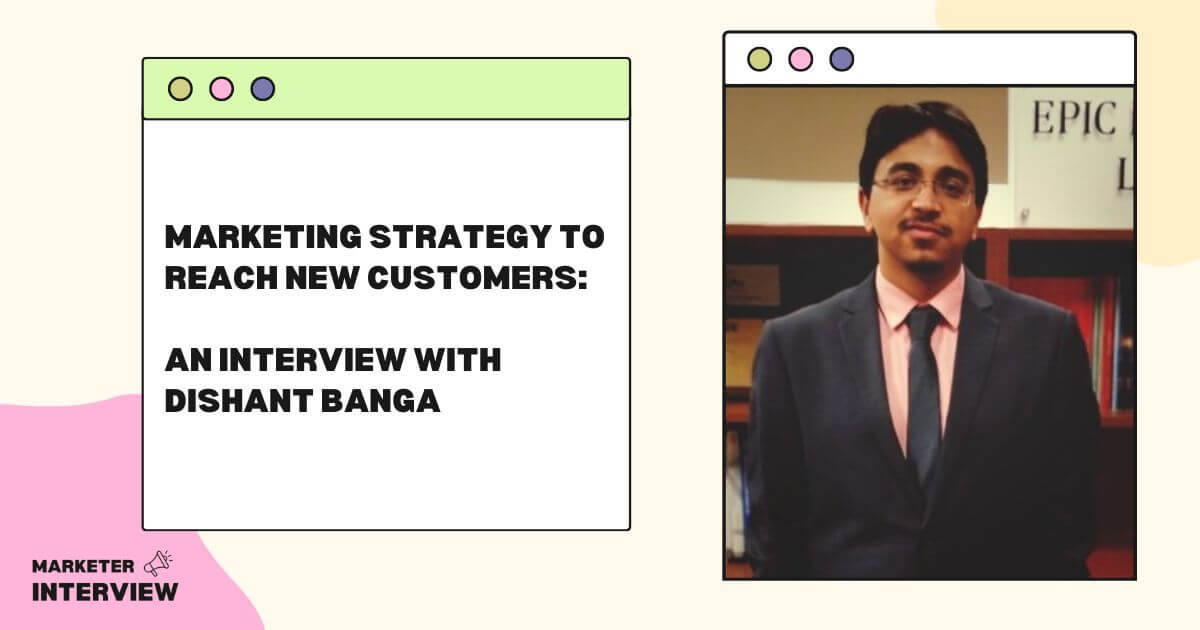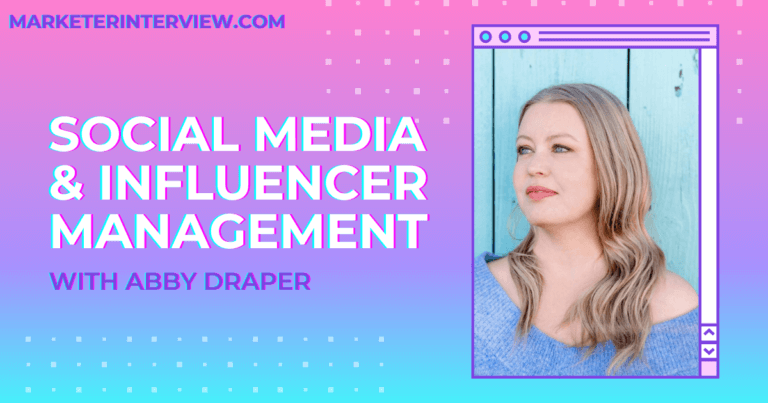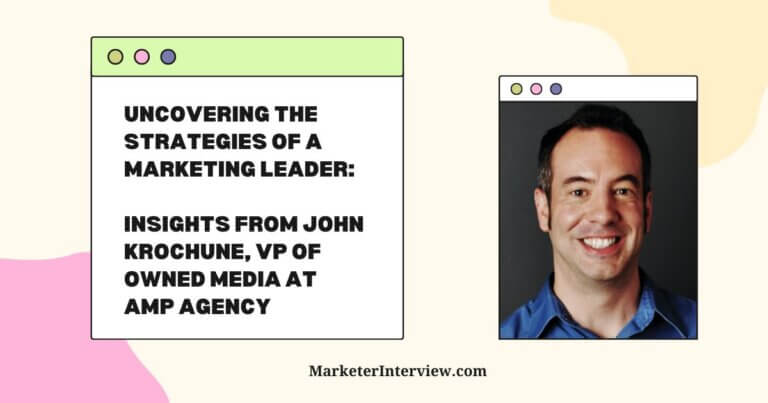Marketing Strategy to Reach New Customers: An Interview with Dishant Banga
In today’s world, marketing has become essential to any business strategy.
To succeed, businesses must continually evolve and adapt to new marketing strategies.
In this interview, we speak to Dishant Banga, an expert in marketing and analytics. He shares his journey and marketing experiences, insights into the evolution of direct mail marketing, and his approach to creating effective email campaigns.
Let’s dive in!
Contents
- 1 Can you tell us about your marketing journey?
- 2 Can you explain the Movers program and how it differs from other marketing strategies? How have you utilized this program in your work at Bridgetree?
- 3 In what ways have you seen direct mail marketing evolve over the years?
- 4 Can you walk us through your process of creating effective email campaigns and measuring their success?
- 5 How do you stay current with the latest trends and best practices in digital marketing?
- 6 What are some of your biggest challenges as a Senior Marketing Analyst?
- 7 How do you use Google Analytics to track and analyze the performance of your campaigns?
- 8 Can you share an example of a particularly successful marketing campaign you participated in?
- 9 What advice would you give someone just starting in marketing?
- 10 Finally, what tools and software do you use daily to do your job?
Can you tell us about your marketing journey?
I got into marketing directly or indirectly by chance.
Since 2010 during my Undergraduate degree, I have been into marketing, whether being a college student doing some promotions to earn extra pocket money OR joining a direct selling company to get familiar with how businesses work.
During that time, I became acquainted with different marketing basics like advertising: Why is it done, and what are the different ways?
My time at Accenture India (2015 – 2016) and my internship in the summer of 2018 at SBTDC gave me hands-on work with real-time clients to understand their businesses to find the correct total addressable market and how the primary, and secondary market looks for launching their products.
After I graduated from a master’s program MS in Engineering Management (specialization in Analytics) in 2018 from UNC Charlotte, I got the opportunity to work at Bridgetree, where I am using my marketing and Analytics skills together to help in growing businesses for various clients.
Can you explain the Movers program and how it differs from other marketing strategies? How have you utilized this program in your work at Bridgetree?
When an individual or family moves from one address to another, they are called movers.
When they list their home for sale or under contract, families are called Pre movers because they are about to move out from that address, and when someone moves into that address are called Post Movers.
Movers Program is a marketing strategy that focuses on helping businesses reach new customers through direct mailing, email marketing, or other techniques. This is different from other marketing strategies because, in this strategy, the primary target audience is movers.
Yes, during my time at Bridgetree, my team and I have utilized and personalized such programs based on the type of audience and businesses and helped grow our client’s business by 150%.
In what ways have you seen direct mail marketing evolve over the years?
Direct mail marketing has been around for a long time and has evolved over the years in response to consumer behavior and technological advancements.
Some ways that direct mail marketing has become and how businesses or we can adapt to these changes:
Personalization: In the past, direct mail marketing often involved sending the same generic mailer to a large group of people.
However, data collection and analysis advances have made it easier for businesses to personalize their direct mail campaigns.
By using customer data to adjust the content and messaging of their mailers to specific individuals or groups, companies can increase the effectiveness of their direct mail campaigns.
To adapt to these changes, businesses should build a data-driven direct mail strategy integrated with their broader marketing efforts.
This might involve using customer data to personalize mailers, experimenting with creative design and format, and tracking and analyzing the effectiveness of their direct mail campaigns.
Integration with digital marketing: With the rise of digital marketing, businesses increasingly use direct mail as part of a broader omnichannel marketing strategy.
For example, companies might use direct mail to drive traffic to a landing page or social media profile or to promote a special offer that customers can redeem online.
Additionally, businesses should be open to incorporating digital elements into their direct mail campaigns, such as QR codes or personalized URLs, to make it easier for customers to take action online.
Creative design and format: Businesses are increasingly experimenting with innovative designs and layouts.
For example, the same business targets one address with a separate baby campaign creative, wedding creative, or housewarming creative.
This includes using eye-catching colors and graphics, unique sizes and shapes, or incorporating interactive elements such as QR codes or augmented reality within each creative.

Can you walk us through your process of creating effective email campaigns and measuring their success?
Email marketing can be a highly effective way to reach and engage with your target audience, especially after COVID-19. Here’s a step-by-step process for creating effective email campaigns and measuring their success:
Define your goals and target audience: Before creating your email campaign, defining your goals and target audience is essential.
For example, are you trying to promote a new product, generate leads, or nurture existing customers? Who is your target audience, and what are their interests and pain points?
Create your email content:
Your content should be engaging, relevant, and actionable. Use a clear and compelling subject line to grab the reader’s attention, and use persuasive copy and visuals to convey your message.
Include a clear call-to-action (CTA) that encourages the reader to take action, such as clicking through to your website or signing up for a free trial.
Segment your email list:
Segmenting your email list allows you to send targeted and personalized messages to different groups of subscribers. Segment your list based on location, interests, or past purchase behavior.
Choose the best time and day to send your email campaign based on factors such as your audience’s time zone and open rates. Monitor your email campaign closely to ensure it sends correctly and has no technical issues.
After finding the right audience next steps will be splitting the audience into treated and control groups where the treated group will receive the offer through direct mail while the control group didn’t.
The group size depends on factors like budget and available audience. However, the ratio of control to treated may vary from 1 to 10.
Measure your results:
After sending your email campaign, measuring its success is crucial.
Track metrics such as open rates, click-through rates, and conversion rates, and use this data to refine your future email campaigns.
Experiment with different subject lines, CTAs, and content to see what works best for your audience.
How do you stay current with the latest trends and best practices in digital marketing?
Some resources and communities that can help you stay informed and inspired:
Blogs and publications: Some many reputable blogs and magazines focus on digital marketing, such as MarketingProfs, HubSpot, Moz, and Search Engine Journal.
These resources often provide insights and analysis on the latest trends and best practices, as well as practical tips and case studies to improve skills in Digital marketing.
Social media communities and online courses: Many organizations offer online webinars, including Google, Udemy, and Coursera.
These courses cover various digital marketing topics, from SEO and content marketing to social media and email marketing, from beginner to advanced levels.
Industry events and conferences: Attending industry events and conferences is a great way to stay current on digital marketing trends and best practices.
These events often feature keynote speakers, panel discussions, and workshops covering various topics.
Hands-on: Starting with small projects and slowly moving them to bigger ones.

What are some of your biggest challenges as a Senior Marketing Analyst?
One of the biggest challenges is sharing the results and findings with non-technical audiences like sales stakeholders and business folks who might need help to understand all the analytical terminologies.
To overcome such a challenge, I made the presentation or dashboards of my results as simple as possible and used the metric they understood.
Another challenge I have faced is I have worked with multiple clients simultaneously, and each of these clients has different business goals, campaign goals, and success metrics.
Sometimes it’s challenging to cope with all the expectations, especially with the same or nearby deadliness. To overcome such a challenge, organizing the work, understanding the business goals and complexity, and communicating properly is the key.
Another top challenge is setting up the campaign experiments with the proper test and control audience and measuring metrics based on business goals. If those are not set correctly, then the campaign will not succeed.
To overcome such a challenge, the campaign and the selected audience must adhere to the business goals and set A/B testing accordingly.
How do you use Google Analytics to track and analyze the performance of your campaigns?
Currently, my team and I are using the Google Analytics platform for Website analytics, like where the traffic is coming from, which page of the website the customers are frequently visiting, and what the journey for a customer looks like after logging in to the website.
One exciting feature is the events, which can be used to track the customer journey moving from one page to another or time avg time spent on that page, avg session time, etc. This will help our clients to improve the website design, UI, etc.
Another critical parameter from a marketing point of view is where this traffic is coming from the website, like organic search, Ads, social media, etc. This helps businesses to set up and measure their campaign campaigns accordingly.
I have worked across various pre- and post-movers and first-time home buyers campaigns.
For example, My team and I set up a First time Home Buyers campaign for one of our top retail clients where we were targeting the FTHB audience with a direct mail offer.
For that, we followed the following methodology :
The first step is understanding the business goals. What the business is trying to achieve in this case is to target first-time home buyers so that they can come in and shop.
The second is finding the right audience for the campaign, which includes sourcing the data through various vendors, cleaning that data, and trying to append the demographics and house graphic information using the national database.
This step may or may not include building a model (either response or segmentation) by using historical data to find the right audience to target. Finally, make sure the addresses which are being targeted are the correct addresses.
After finding the right audience next steps will be splitting the audience into treated and control groups where the treated group will receive the offer through direct mail while the control group didn’t.
The group size depends on factors like budget and available audience. However, the ratio of control to treated may vary from 1 to 10.
After the test is live, the final step is measuring the campaign’s performance after 60-90 days because that will give enough time for the offer to be in the market.
The metrics can be used from campaign to campaign but are not limited to shop rate, net sales, Incremental sales and Incremental margin, ROI, etc.
For the above example, we were able to drive a 90% significant shop rate for test over control with 215% ROI
What advice would you give someone just starting in marketing?
Marketing is an exciting field that offers many opportunities for growth and learning. Some tips or advice I would like to give to anyone are :
Develop a strong foundation in the basics: Marketing can involve various tactics and strategies, from social media and content marketing to paid advertising and SEO.
Start building a solid foundation in marketing basics, such as branding, market research, consumer behavior, tools for tracking analytics, or a new trend in consumer behavior.
Develop strong communication skills: This field involves working with a wide range of stakeholders, from clients and customers who are non-technical, so strong communication skills are essential for success in presenting results /findings to a client or collaborating with different teams.
Be data-driven and results-oriented: Marketing is ultimately about achieving measurable results, whether increased website traffic, higher conversion rates, or higher sales. To be successful, it’s essential to have data-driven results. These results help track marketing campaign performance and make informed decisions about future campaigns.
Finally, what tools and software do you use daily to do your job?
I use various tools daily, like SQL server, SAS, Python, Tableau, and Snowflake.
Some helpful tools are:
SQL: this is a must for anyone planning to build a career in analytics. SQL helps you understand the data. It helps in cleaning and structuring the data.
Tableau: It is a visualization tool, and this has been very helpful in building story-out data that a non-technical person can also understand






